This is an overview with only one or two pictures from each day.

Our group assembled over the course of a day at the Threeways House Hotel in Mickleton. We came from all over the US: Alaska to Georgia, Massachusetts to Southern California, and places inbetween. Most of us took advantage of the beautiful day to walk around the town. Some of the more ambitious walked to the nearby Hidcote Garden. As for ourselves after a nice stroll we headed for the nearby Butchers Arms pub for lunch and a pint. They featured a Cornwall Ale that became one of our favorites: Doom Bar.
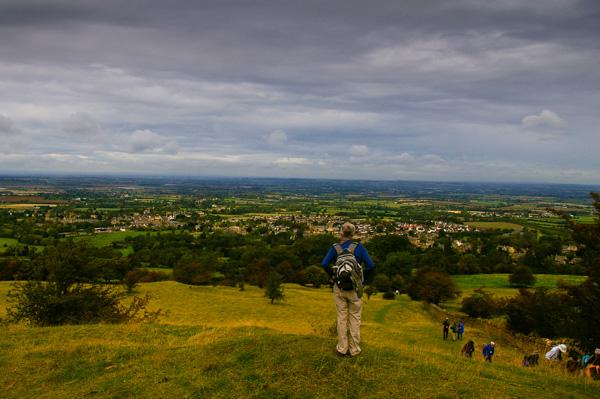
The next morning we loaded into our small bus for a trip to Broadway, the start of our first hike. We didn't visit the town, but set out up Broadway hill.
The Cotswold hills are shaped like a wedge of cake on its side. There is a steep western slope and a gradual eastern slope. This is the eastern slope overlooking Broadway. I learned that it was a good idea to keep close to the leaders on the trail. You may have to walk a bit faster, but you had more time to rest while waiting for the others.
Our morning's walk ended with lunch in Chipping Camden and a tour of the town.
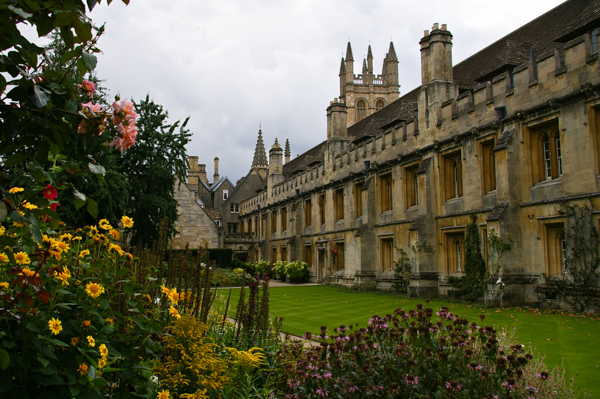
The following day we visited Oxford with lunch and a tour of Magdalen College.
The gardens overlooking the cloisters were lovely, but the deer in the park didn't come over to pose for pictures. Our guide said the herd was established to provide meat for the students!
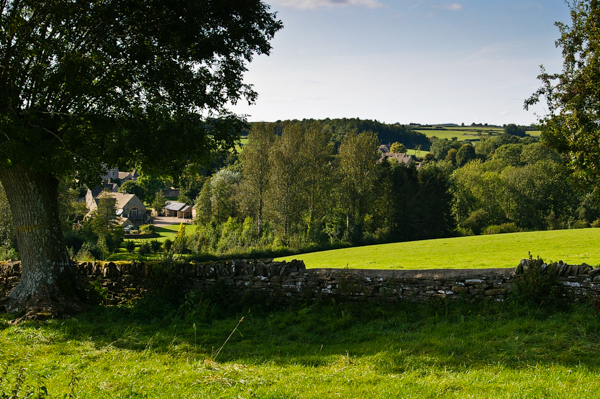
After a visit to William Morris's country retreat of Kelmscott Manor, we took our bus to Bibury, where we continued our investigations of pub lunches (and pints) and then spent the afternoon walking more-or-less along the Coln River to Fossebridge.
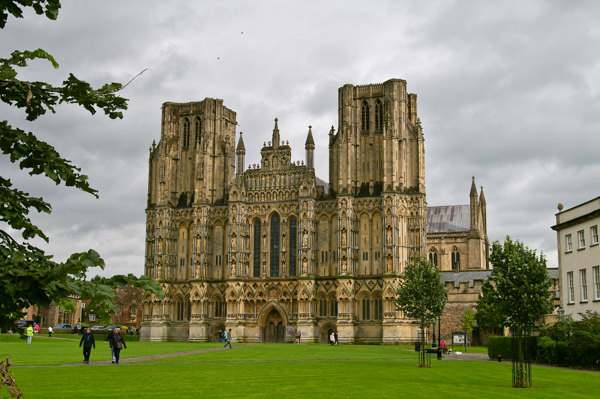
En route to Cornwall for our week of hiking there, we stopped at the cathedral city of Wells for lunch and a visit to the cathedral. There was of course, much more to see than could be fit into the brief time we had there.
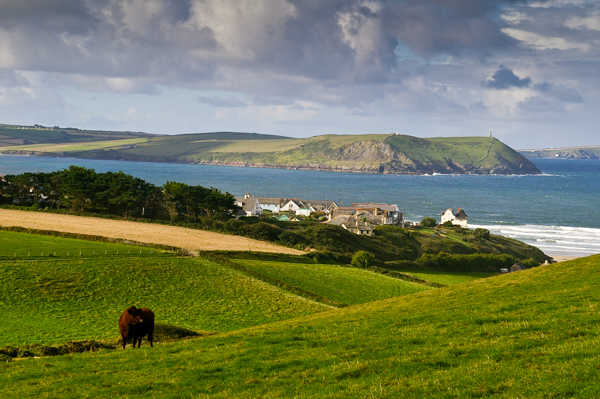
Our first day in Cornwall started with a walk from Pentire to Trebetherick along the South West Coast Path. Checking out the interactive map at the link, I found that our walks during the week were for the most part considered "challenging." That's certainly how I'd characterize them!
The village on the coast is our destination, but we won't be taking a direct route. Our walk will be five to six miles depending on a choice of an extra excursion.
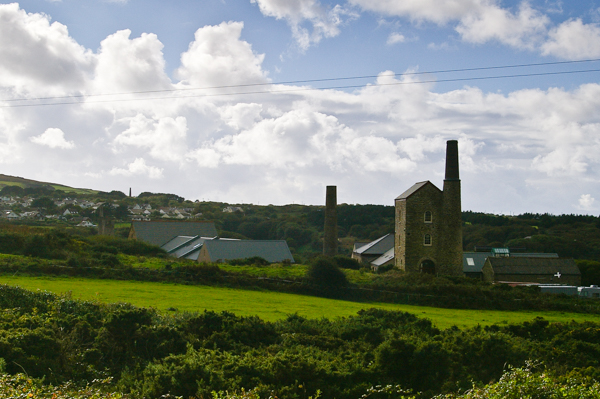
fter leaving St. Ives we visited Blue Hills Tin Stream – a working tin producer. Cornwall has been famous for its tin mining since at least the Bronze Age. At present there is no large-scale mining in Cornwall because increased competition in the late 20th century lowered prices enough to make it uneconomical. Although prices have risen since then, the cost of re-opening old mines is prohibitive due to flooding and other reasons.
Blue Hills is a small producer that makes jewelry from alluvial tin obtained using historical methods of extraction and smelting. The site is in the bottom of a deep valley reached by a road that was too steep & narrow for our bus. We got our daily exercise by first walking down and then back up! I took this picture of abandoned mine buildings at the top. There are very many throughout Cornwall. The above-ground buildings housed engines that powered pumps and mine access.
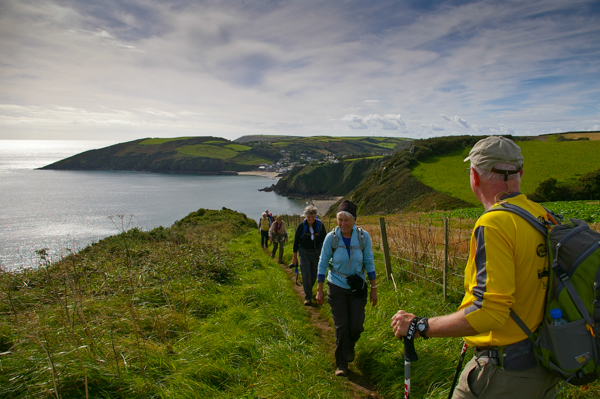
The following day brought a choice of excursions. I chose the hike along the South Coast trail.
Leaving Gorran Haven. The villages along our walk were advertised as "unspoiled fishing villages," but they all had quite a few obviously expensive vacation or retirement homes. At least they were not crowded with tourists and curio shops like. We stopped there for a snack and a bio break. There were many well-maintained public facilities all along our travels. We welcomed each opportunity.

Jim chose the "Lost Gardens" at Heligan. They were developed in the 18th & 19th centuries, but after WW I they declined. By mid-century nature had reclaimed her own. The family sold the manor house after dividing it into condominiums but retained the gardens. In the early 1990s archival sketches, photographs and the remains of walls, greenhouses and plantings guided the restoration.
Efforts are made to recruit various critters as part of integrated pest control. The tower in the center of the photo is a wildlife tower intended to attract a variety of animals, perhaps including bats.
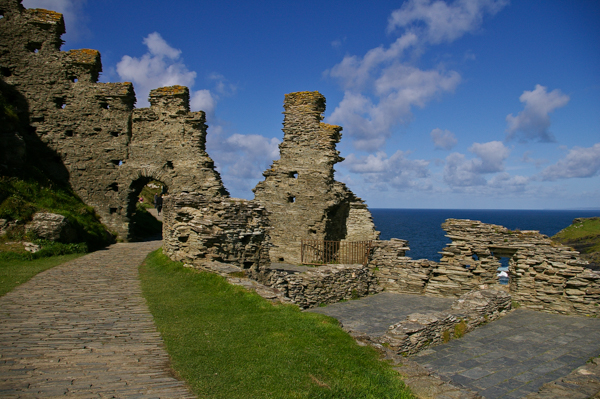
The final day's hike from Boscastle to Tintagel was the most strenuous.
King Arthur was said to have been conceived (or born) at Tintagel, but the existing ruins are much later. Earl Richard of Cornwall constructed the castle in the 13th century. There were older ruins on the island, but they were by no means as spectacular.
The majority of the ruins were on the mainland instead of this isolated headland.
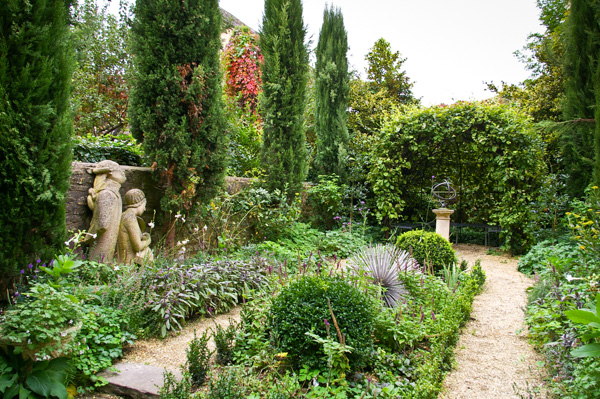
After leaving Cornwall, we traveled to Bath where several of our hikers had arranged to meet friends.
We chose to visit te residence of William and Caroline Herschel. This brother and sister team revolutionized the science of astronomy. The house is now the home of the William Herschel Society and contains a modest museum to the contributions of the siblings.
Their discoveries were made from observations in this garden.
Click your "back" button to return to the previous page or click for our picture album.